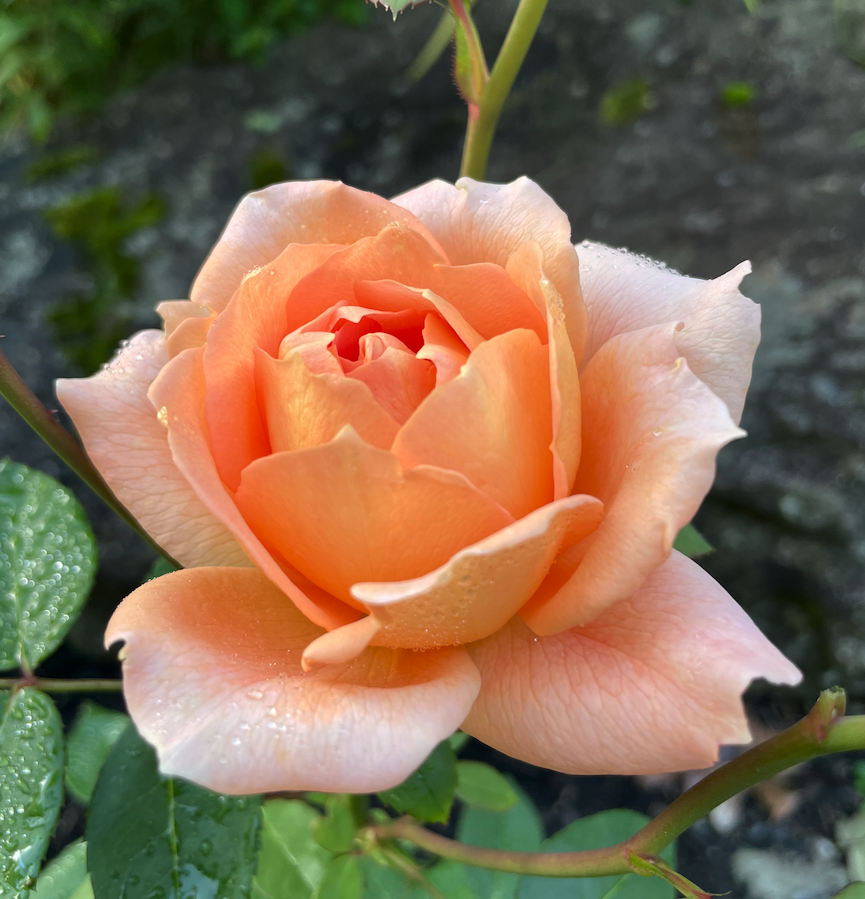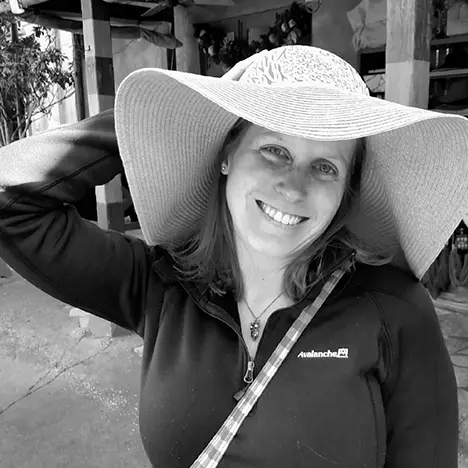Crafting Scenes

09 September 2024
Categories:
Above: An apricot colored rose blossom, with small beads of moisture dappling a few petals and leaves.
September 9, 2024
Updates
Mysteries of the Material:
- I just got the 100% design for the cover of book two, and I’m in love with it. I’m having the artist make a couple of minor adjustments, but otherwise it’s done. I can’t wait to share it with you—likely in October.
- The full manuscript has been sent to the editor. I expect her feedback in early October, which gives me plenty of time to do everything I need before publishing in November. It’s getting real, folks!
Convergence of Connection:
- I’m halfway though my initial round of editing. I’ve already shaved off over 7,000 words, which were mostly repetitive descriptions and ideas that pop into my head as I’m “pantsing” my way through. This is common, and not reason for alarm. I’ll take my time with the editing process, and make it the best it can be.
__
Last week, the following question was asked of Mastodon’s “Writers Coffee Club” community: Do you have specific goals when creating a scene?
I answered as best I could within the 500-character limit, but there’s a lot to discuss. Join me as I extrapolate.
Crafting Scenes
The short answer to the question above is, of course. Every scene should have a goal. Otherwise, what’s the point of including it?
There is no one right way to write. “Plotters” (or “architects”) outline the entire novel, while “pantsers” (or “gardeners”) take more of a discovery approach, letting the story unfold as they draft it. This is less of a grouping and more of a spectrum. I fall somewhere in the middle.
It (Usually) Starts With The Outline
I’ve mentioned before that I “pantsed” my way through the first draft of The Way of the Wielder. Admittedly, it was a fun experiment, but I rambled on and on, swelling the first draft to 260k words (the published version is 156k).
Since then, I’ve outlined all of my books. Nothing too detailed or restrictive, just enough to give the story direction while allowing for creative freedom. I start by making a bulleted list of everything that needs to happen in the book—character growth, world building, tension and conflict, action, etc. Then, I take those points and organize them chronologically. Finally, I group them into chapters, usually including 2-4 points per chapter.
Character
By this point, I know who needs to be the POV character for each point. This is when the scene really comes alive.
Like I said, every scene should have a goal. Often, I craft scenes to have more than one goal. For example, I almost always have some kind of character development in my scenes, even if its main purpose is, say, world building. These overlapping goals build a dynamic and interesting scene that, for me (as the writer), is very rewarding to develop. The goal (ha!) is to ensure that it’s just as interesting for you (as the reader) to…well, read. And to keep you reading.
So, how do I do that?
It should come as no surprise that many readers enjoy character-driven stories. When authors put the time into creating realistic characters—flaws and all—readers find themselves relating to them, and connecting with them on a deeper level.
This, more than anything else, is my goal. To build characters that are real, to give my readers a story that resonates, to get at the very heart and soul of what it means to be human. Sure, the situations might not be the same, but the reactions the characters have—the emotions they feel—while in those situations are familiar. We can empathize with them, and empathy begets understanding, begets connection.
How It Comes Together
Once I know what’s supposed to happen and who’s POV it’s from, the rest sort of just…happens. That’s writer lingo for, “I can’t really explain how it comes together, it just does, and it’s amazing.”
Joking aside, this is the part of the writing process I love. I have that basic understanding of where the scene needs to go, and let the character guide me. I experience the scene with them, writing not just as the narrator, but as the character themselves. And because the character has grown throughout the story, I don’t exactly know how a scene will unfold in advance.
This is that discovery writer aspect. Where the story almost shapes itself as it’s written (within the parameters of my high-level outline—again, we’re not entirely directionless). It’s exciting, sometimes unexpected, occasionally annoying, but it’s what keeps me coming back day after day.
Beyond that, I can’t really explain how it comes together. It just does. And I’d like to think that, so far, it’s turned out alright.
__
Last week, The Way of the Wielder hit the 100 sales milestone!
If you’ve purchased my first book, thank you for your support! If you haven’t yet but would like to, you can buy your copy on Amazon now. Paperback, Kindle, and Kindle Unlimited options are available. Don’t forget to leave a review!
__
Thanks for reading. Be well, and as always, stay creative!
~Sarah
